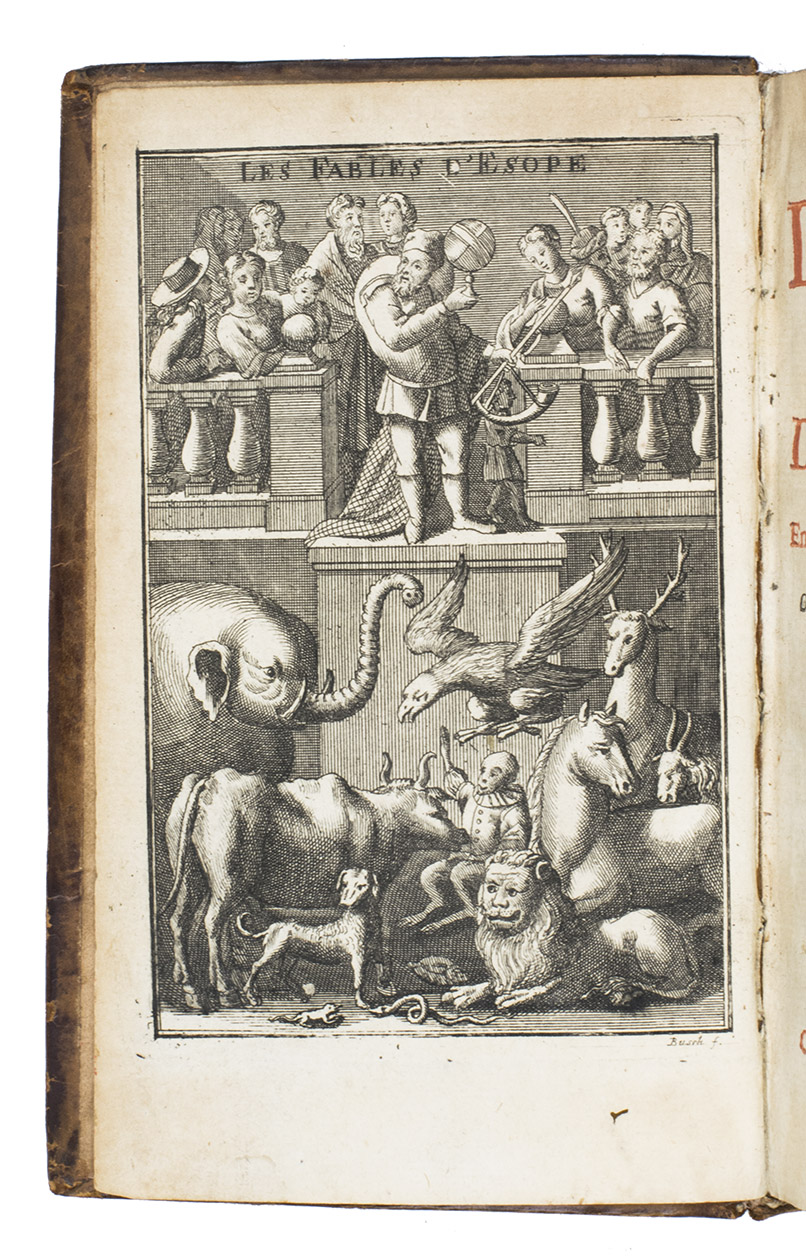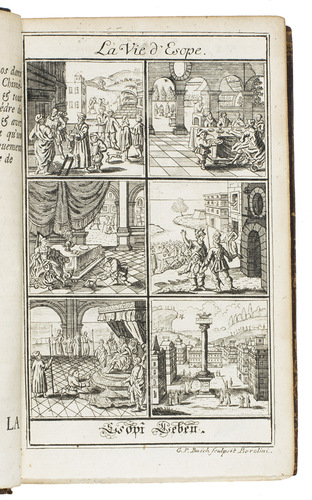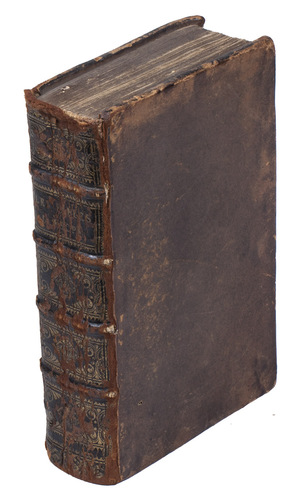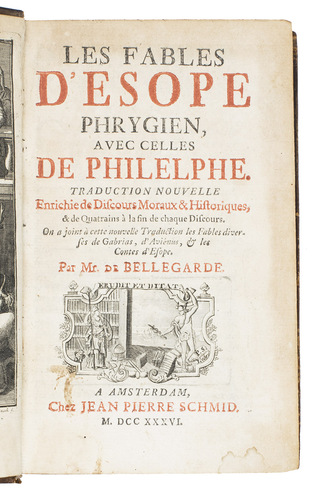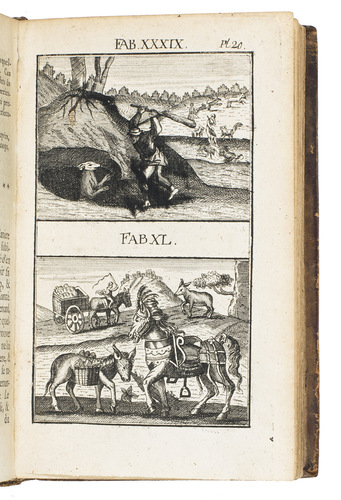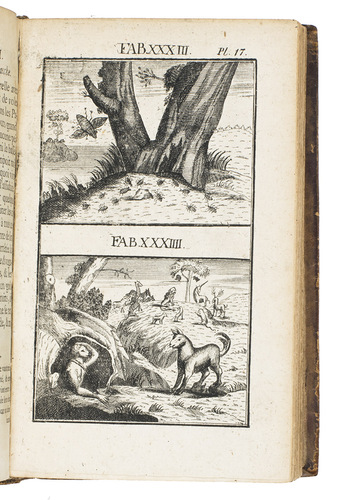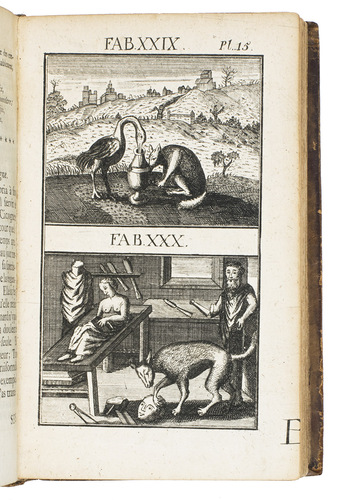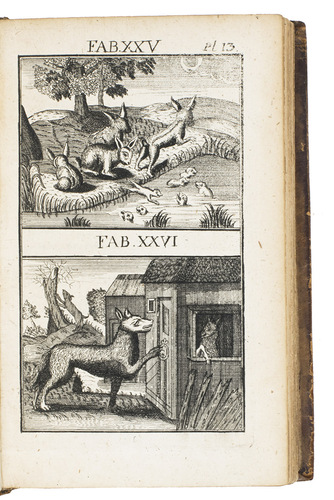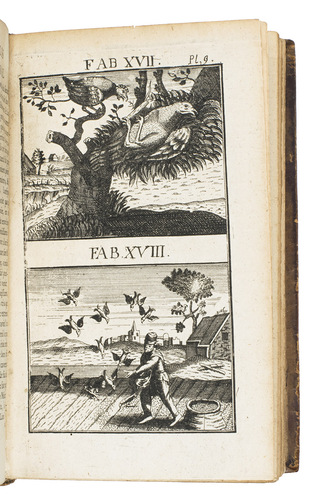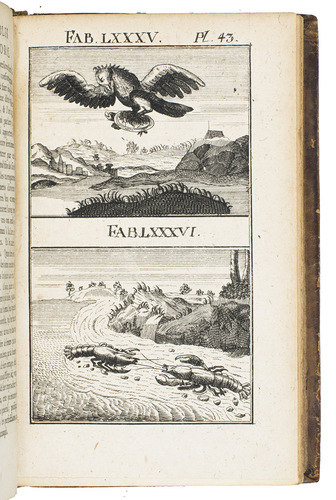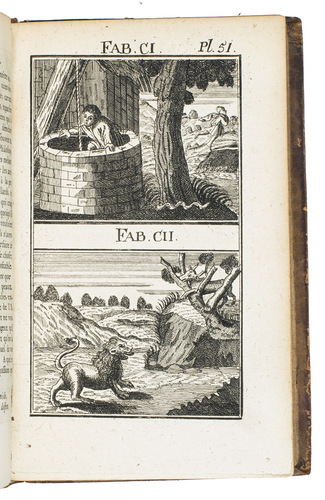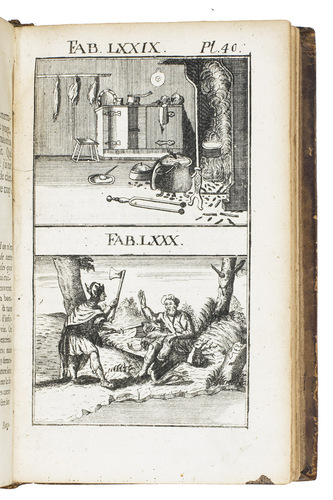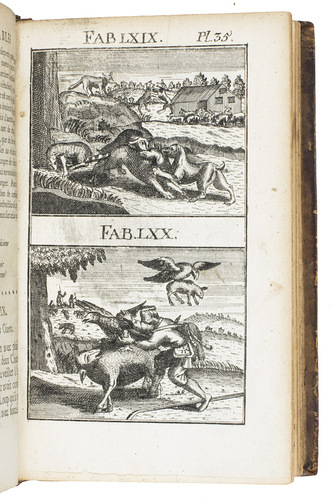AESOP, and Francesco FILELFO. (Jean Baptiste MORVAN DE BELLEGARDE, trans.).
Les fables d'Esope Phrygien, avec celles de Philelphe. Traduction nouvelle, enrichie de discours moraux & historiques, & de quatrains à la fin de chaque discours. On a joint à cette nouvelle traduction les fables diverses de gabrias, d'aviénus, & les contes d'Esope.
Amsterdam, Johann Peter Schmidt [possibly printed in Leipzig], 1736. 8vo. With an engraved frontispiece, engraved plate illustrating Aesop's life in 6 small scenes, and 59 numbered engraved plates with 117 half-page illustrations for the 117 numbered Aesop fables, all plates probably engraved by Georg Paul Busch in Berlin (the frontispiece and scenes of Aesops life signed). Contemporary calf, sewn on 4 cords, gold-tooled spine, red sprinkled edges. 477, [9], [2 blank] pp.
€ 2,500
Rare and beautifully illustrated edition of 117 Aesop's fables in French, each with an extensive discussion of the moral followed by a four-line verse, by Jean Baptiste Morvan de Bellegarde. He adds French prose translations of further fables without illustrations: 18 numbered fables by the Renaissance Italian humanist poet and scholar Francesco Filelfo or Philelphus (1398-1481), translated from the Latin verse; 37 fables based on Aesop by Gabrias and Avienus, translated from the Latin verse; two longer fables: the "Battle of the cats and the rats", and the "Battle of the rats and the frogs"; five Aesop "tales" taken from Plato's dialogue Protagoras; six numbered "poetical fables", with Olympian Gods as protagonists; and finally three more "tales", the first from Herodotus and the last from Gerbellius. Pieter Mortier in Amsterdam first published the present collection of fables in 1708. Bellegarde (1648-1734), a French Jesuit, was clearly influenced by the very popular French Aesop translation by Jean Baudoin, whose 1649 and 1659 Paris editions also included Filelfos fables. Even the frontispiece is based on Baudoins, except that the king with armillary sphere, hunting horn and spear is replaced by Aesop with the same objects.
The engravings in the present edition are copies of those in the 1708 edition (where each Aesop fable had a separate half-page engraving, here combined in pairs, except for the last). The engravings are beautifully executed by Georg Paul Busch (active 1713, d. 1756), a Berlin copper-plate engraver. The animals and intentions of Aesop's fables are drawn with a firm and certain hand in clear and rather "sec" scenes and movements, with the strong contrasts in black and white working as a kind of "colour" for the plates. The book is set primarily in types (roman and italic) cut by Nicolaus Kis in Amsterdam, but they were probably cast in Leipzig and the book may have been printed there.
Very slightly browned, with an occasional (mostly marginal) stain and a marginal worm hole in a few leaves, but still in very good condition. The backstrip is damaged and the boards slightly rubbed. STCN (1 copy); cf. Bodemann 97.1 & 2 (1708 & 1709 Amsterdam eds.); Fabula Docet 124 & ill. on p. 193 (incomplete 1734 Utrecht ed.); Landwehr, Emblem & fable books F062 (1708 Amsterdam ed.); not in Anne Stevenson Hobbs, Fables; The fox and the grapes: checklist Aesopic fables Pierpont Morgan Library.
Related Subjects:
